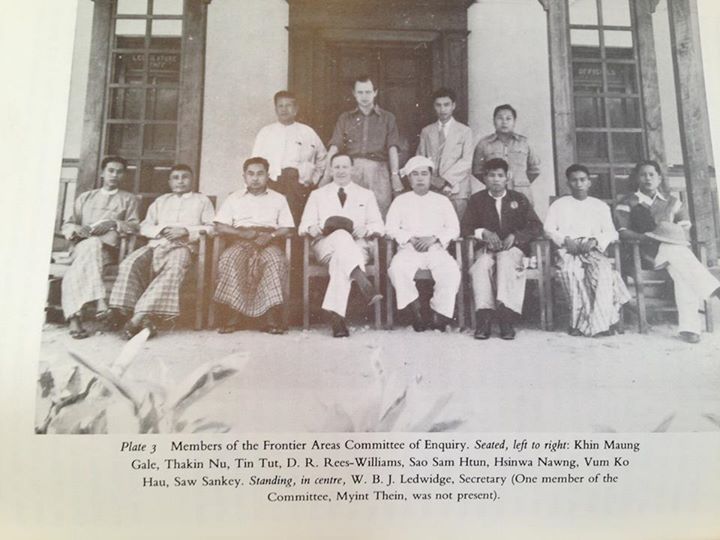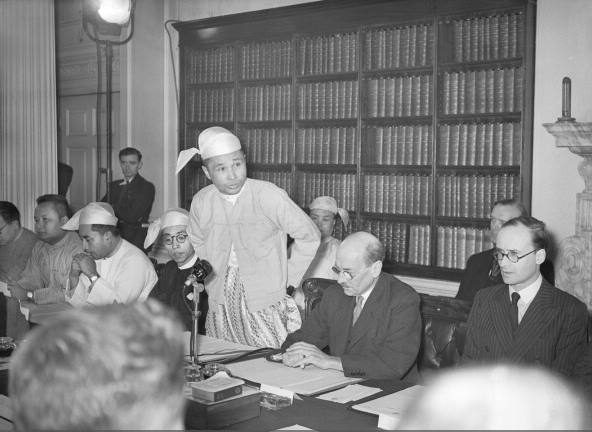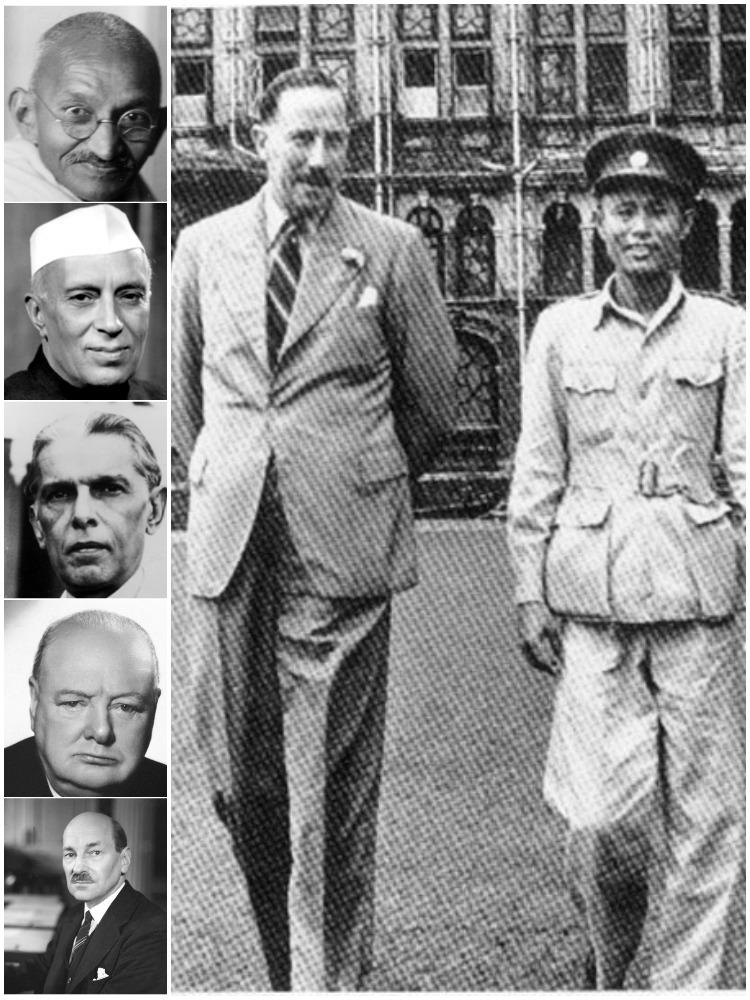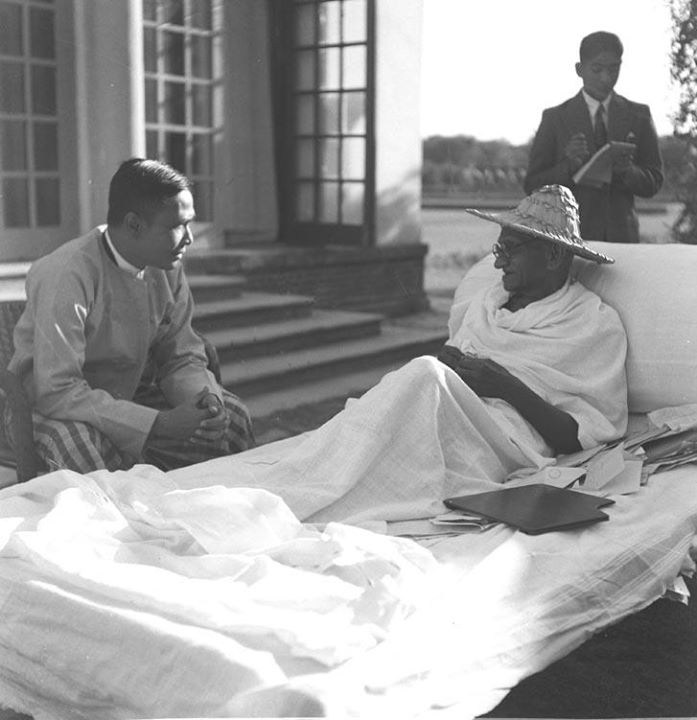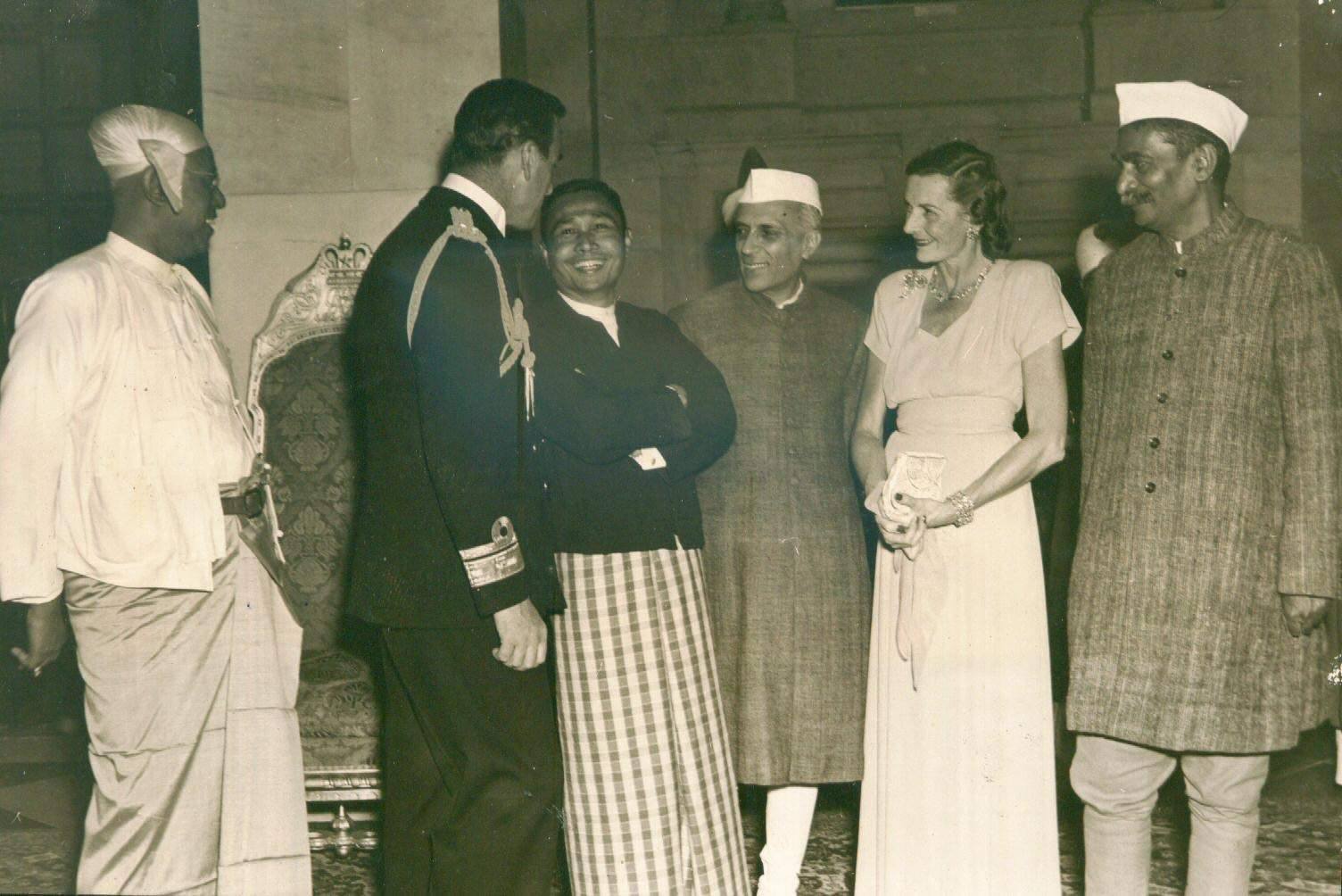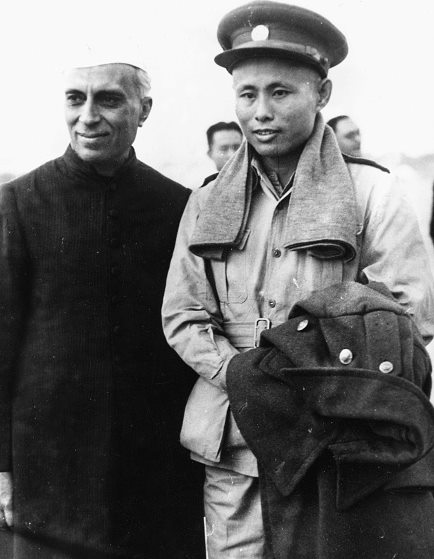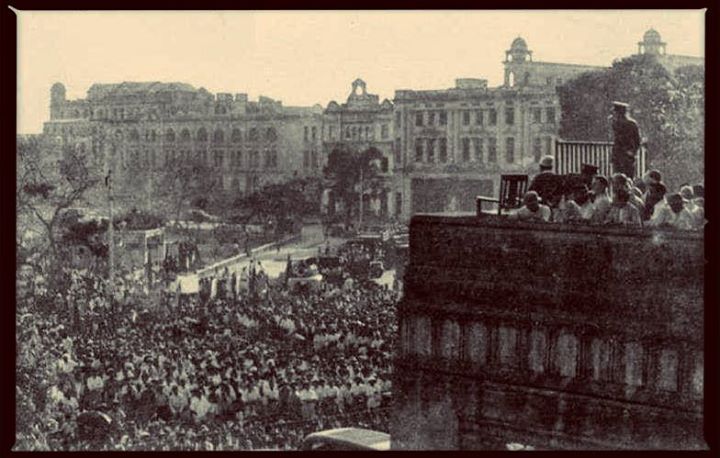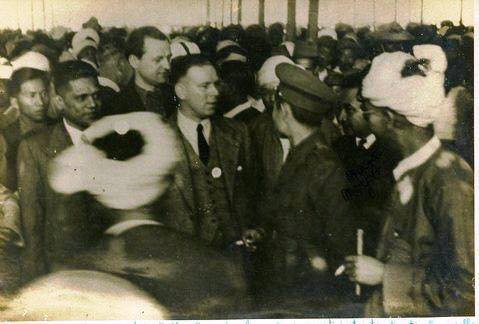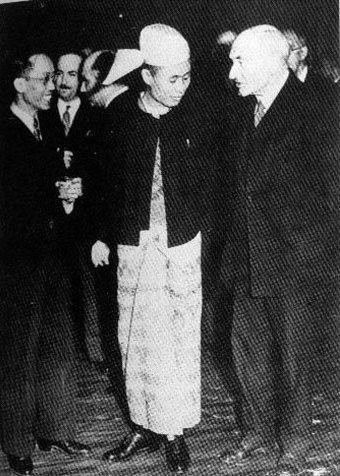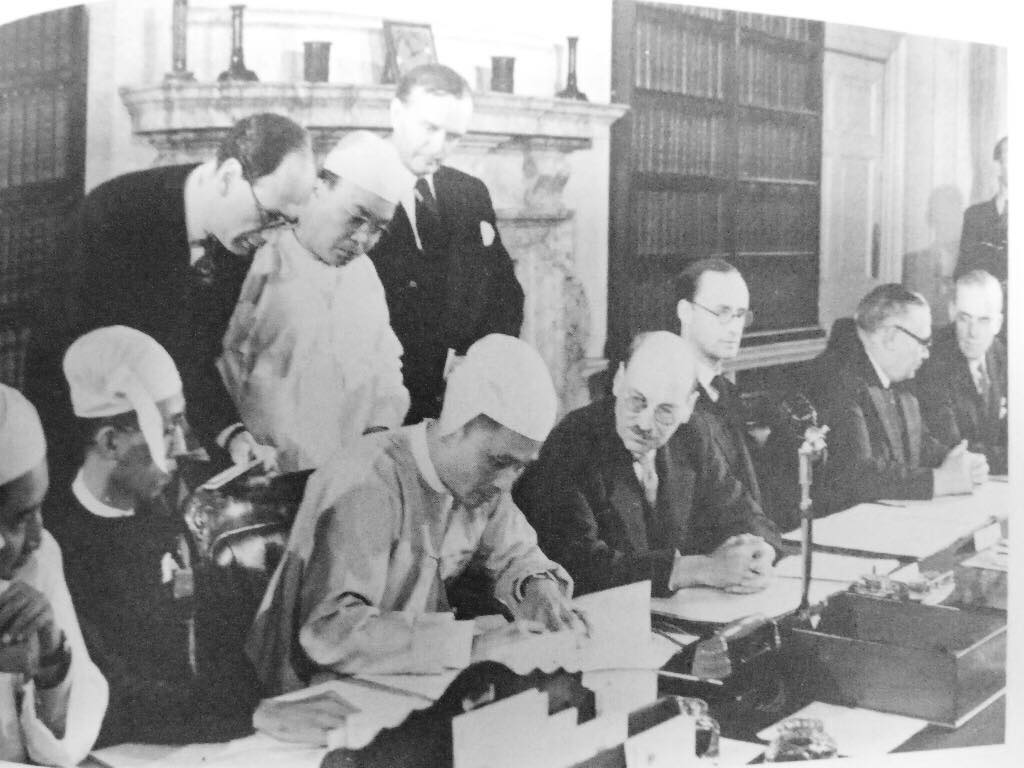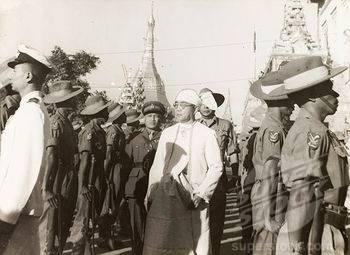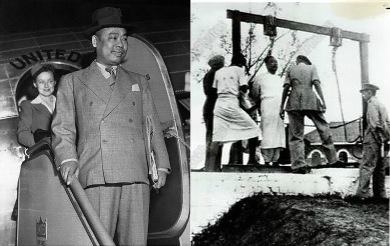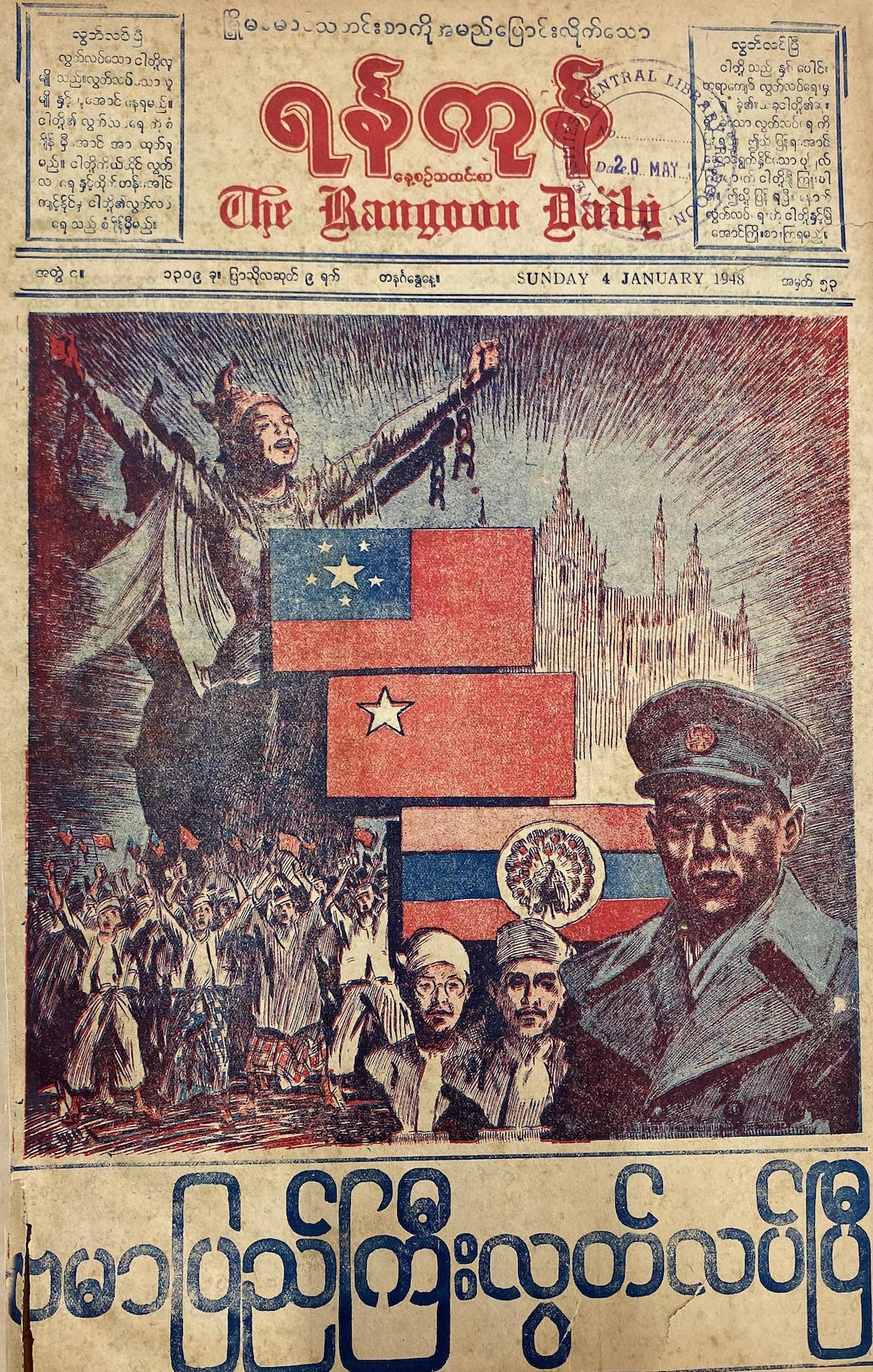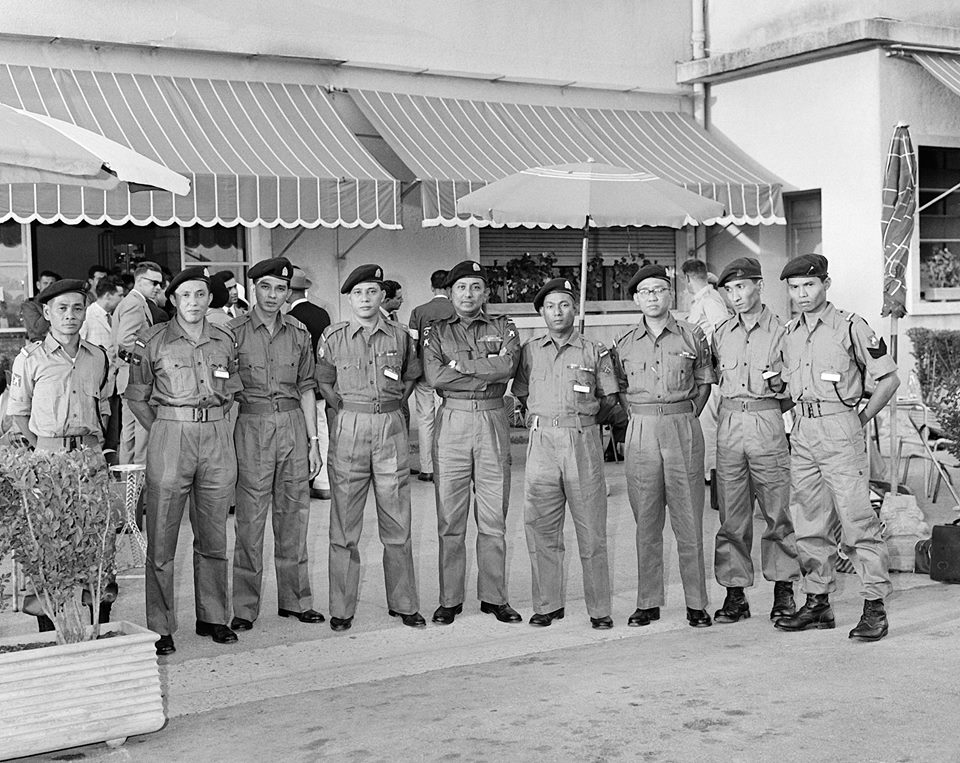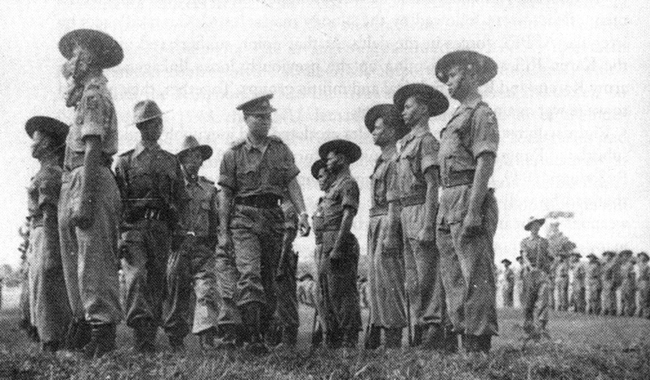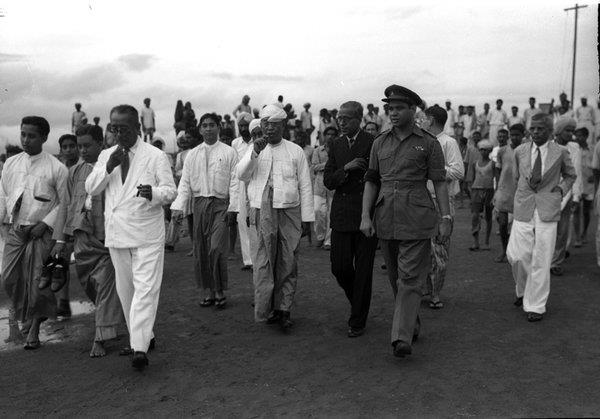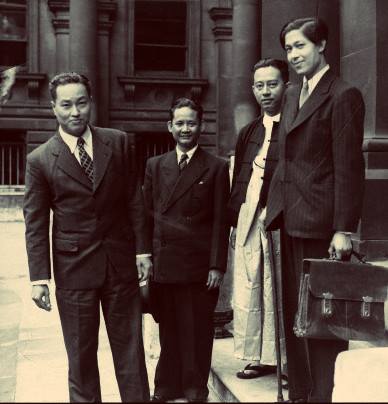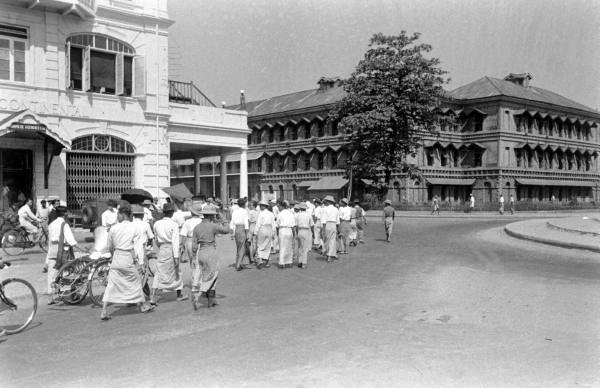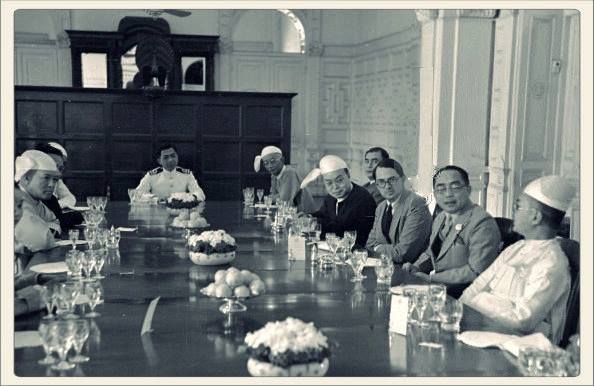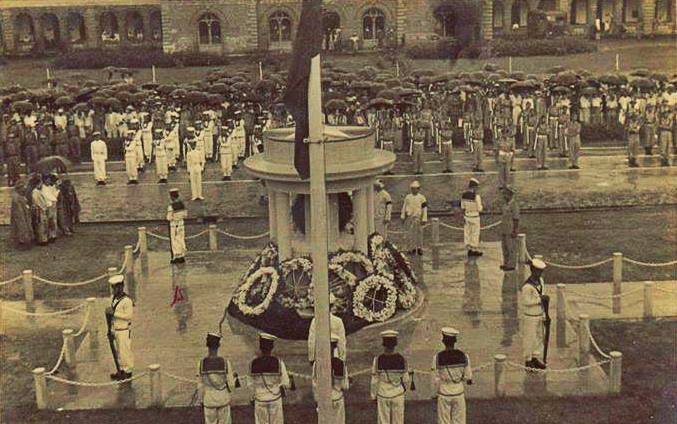Independence and Civil War (1945-1951)
White Paper on Burma
On 17 May 1945 the British government issued its "White Paper" on the future of Burma. Burma's Anti-Fascist Organization (later Anti-Fascist People's Freedom League, AFPFL) under General Aung San opposed the programme outlined in the White Paper, leading first to a stand off against the returned British authorities, then to negotiations in London in January 1946 and finally independence outside the Commonwealth in 1948. The White Paper proposed the following: (1) A period of "direct rule" by the Governor (assisted...
Read MoreWarless Days of Myanmar
From 23 December 1941 (when the Japanese began their invasion of Tenasserim and launched an aerial raid over Rangoon, announcing the arrival of World War Two in Burma) until today, Myanmar experienced a total of 31 months without war - from August 1945 when the Japanese surrendered to the Allies to March 1948 when the Communist insurrection began. It is impossible to understand future options in Myanmar without first appreciating the legacies of more than 70 years of armed fighting. ...
Read MoreLabour Party's Election Victory changed Burma's History
In July 1945, the Labour Party in the UK won a landslide victory over the Conservatives and Clement Attlee replaced Sir Winston Churchill as Prime Minister. Labour's election victory without a doubt changed the course of Burma's history. Prime Minister Attlee was committed to decolonization and within a year reversed earlier policies and began moves towards Burmese self-determination. By 1949, the Attlee government had granted independence to India, Pakistan, Burma and Ceylon. Attlee had visited Burma twice in the 1920s...
Read MoreUK's decision to quit Burma
On 20 December 1946, UK Prime Minister Clement Attlee informed the House of Commons of his government's intention "to hasten forward the time when Burma shall realize her independence, either within or without the Commonwealth". In other words, the UK had decided to quit Burma. Clement Attlee's Labour government were coping with severe and mounting economic challenges at home, and facing dire emergencies in India, Palestine, and Greece. Communal violence in India would soon claim the lives of millions. Palestine...
Read MoreU Nu with Gandhi in Delhi 1947
The struggle against British colonialism is a shared history of Burma and India. Mahatma Gandhi visited Rangoon three times: in 1902, 1915, and 1929. He had a big impact on Myanmar politics and Myanmar had an important impact on him. Gandhi wrote about how these trips influenced his thinking, on colonialism, and on the role of women. His close friend and patron since student days in London was Dr. Mehta who lived on Mughal Street and later Shwedagon Pagoda Road. ...
Read MoreGeneral Aung San in London
This photograph shows General Aung San at the Dorchester Hotel in London during negotiations with the UK government in January 1947. He is flanked by Thakin Mya and U Tin Tut (the delegation's principal negotiator). The meetings resulted in the signing of the Aung San-Attlee Agreement, which outlined the conditions for Burma's independence from Britain and was the moment of General Aung San's greatest triumph. Just six months later, Thakin Mya would be killed together with General Aung San, and...
Read MoreA Shared History of India and Burma Independence
India became independent from the British Empire on 15 August 1947. The country was partitioned and the new state of Pakistan was created at the same time. India and Burma immediately established diplomatic ties, but as Burma was then not yet an independent republic outside the Commonwealth, the country was represented in New Delhi by a High Commissioner. Burma's road to independence was intimately tied with India's. Modern Burmese politics began with the Montagu-Chelmsford reforms of 1917 and the fear...
Read MoreU Aung San's historic meeting with Pandit Nehru
General Aung San met with Pandit Nehru in Delhi, where he stopped on his way to London to discuss Burmese independence with Prime Minister Clement Attlee. Pandit Nehru realized General Aung San's tropical outfit would not be suitable for London, which was then experiencing one of its coldest winters in history. He gave General Aung San a greatcoat and had two new bespoke uniforms of warmer material made for him. The winter of 1946-47 was to be the UK's coldest...
Read MoreGeneral Aung San's Last Speech
On 13 July 1947, U Aung San gave his last speech from the balcony of City Hall to supporters in Fytche Square (now Maha Bandula Park). He was then the de facto head of an Interim government (formally the Counsellor for Defense and External Affairs and deputy chairman of the Executive Council) under the Governor Sir Hubert Rance. This would be his last speech: U Aung San and nearly his entire Executive Council would be killed less than a week...
Read MoreUnion Day: Anniversary of the 1947 Panglong Agreement
Myanmar's Union Day, which falls on 12 February, marks the anniversary of the Panglong Agreement of 1947. There is considerable mythology surrounding the Panglong Agreement and it is helpful to remember what it was and what it was not. The Panglong Agreement was primarily an agreement on transitional arrangements in the lead up to Burmese independence after World War Two. Of its nine paragraphs, four deal exclusively with the new position of "Counsellor to the Governor to deal with Frontier...
Read MoreAung San-Attlee Agreement
Between 13 and 27 January 1947 discussions took place in London between the British government of Prime Minister Clement Attlee and the visiting Burmese delegation led by General Aung San. These discussions led to the Aung San - Attlee Agreement. The Agreement stated as the "common objective" of its signatories "a free and independent Burma whether within or without the British Commonwealth Nations”. It called for elections to a Constituent Assembly "as soon as possible", and laid out many and...
Read MoreNu-Attlee Agreement
1 October is the anniversary of the signing of the Treaty between the Government of the United Kingdom and the Provisional Government of the Union of Burma on the independence of Burma (the Nu-Attlee Agreement). The agreement came after months of negotiations led by U Nu (then Premier of the Burma Provisional Government), U Tin Tut (Finance Minister) and others. The signing by U Nu and the British Prime Minister Clement Attlee (shown in this video) was witnessed by Bo...
Read MoreThe 1948 Government of Burma was genuinely multi-ethnic
This photograph, taken in August 1948, shows the first President of independent Burma, Sao Shwe Thaik and Army Chief General Smith Dun inspecting troops in front of the Rangoon Corporation building after the declaration of martial law. The communist ("White Flag" and "Red Flag") People's Volunteer Organization and Mujahideen insurrections were in full swing. Karen, Kachin, and Chin battalions were fighting Burmese communist and PVO militias up and down the Irrawaddy valley. It was also a time (the only time)...
Read MoreThe Hanging of U Saw
U Saw was hanged at Insein Jail on 8 May 1948 for the assassination of General Aung San and his colleagues. Mysteries still surround the assassination but U Saw's involvement is beyond doubt. He was buried in an unmarked grave within the jail. The photo on the left was taken during his 1941 trip to London and Washington as Prime Minister of Burma.
Read MoreMyth of Burma Independence
On 4 January 1948, at 4:20 am, Burma became an independent republic outside the British Commonwealth. The Union Jack was lowered for the final time at Government House in Rangoon and the last Governor Sir Hubert Rance formally handed over power to the Union of Burma's first president the Saopha of Yawnghwe, Sao Shwe Thaik. There is a myth that Burma at independence had all the attributes of a country fated for prosperity. But the country in January 1948 was actually...
Read MoreUnited Nations Day
October 24 is United Nations Day, which marks the day in 1945 when the UN Charter first came into force (after ratification by all the five big powers: China, France, United Kingdom, United States, and Soviet Union). Burma became independent a little more than two years later. The letter pictured here is from ICS U So Nyun (then ambassador in Washington) formally applying to United Nations Secretary General Trygvie Lie for Burma's membership to the United Nations. From 1948-62, Burma...
Read MoreLongest on-going civil war
The Burmese civil war is the longest-running armed conflict in the world and has continued, in one form or another, from independence to the present day. In a way Burma is a place where World War Two never really stopped. Ever since the first Japanese bombers hummed overhead and dropped their payloads over downtown Rangoon, the country has not known peace. For a brief period, between August 1945 and independence in January 1948, there were no open hostilities. And since...
Read MoreForeign minister U E Maung’s Visit to India 1949
This photograph shows Burmese Minister of Foreign Affairs, U E Maung, arriving at Delhi airport in September 1949, together with the Burmese ambassador to India, Sir M.A. Maung Gyi, and other Burmese and Indian officials. U E Maung and Sir M.A. Maung Gyi are both smoking cheroots, something not common at VIP airport arrivals any more.
Read MoreGeneral Ne Win in UK 1949
This photograph, taken in July 1949, shows General Ne Win (far left) at the Foreign Office in London together with U Hla Maung (then Burmese Ambassador to Thailand), Bo Setkya, and Burmese Ambassador to the UK, U Ohn ("San Shay"), who translated for General Ne Win. They were there to meet British Foreign Secretary Ernest Bevin as part of a week-long visit. General Ne Win then went on to Washington. In 1949, General Ne Win was Deputy Prime Minister as...
Read MoreAnti-Government Demonstration in 1949
This photograph, taken in 1949 on the corner of Sule Pagoda Road and Montgomery Street (now Bogyoke Aung San Street), shows an anti-government demonstration. The government then controlled little outside Rangoon and much of the country was in the hands of the Communist Party of Burma, the Karen National Defense Organisation, and various militia. Le Maison Continental (a leading French restaurant) is partly visible on the left, the offices Burma Railways on the right.
Read MoreLunch hosted by President Sao Shwe Thaik in 1949
This photograph, taken on 9 April 1949, shows President Sao Shwe Thaik hosting a lunch at Government House in Rangoon. The civil war was then at its height, with the Burma Army battling to regain control of Insein, Twante, Bassein, Henzada, Toungoo, Prome, Mandalay and Maymyo and many other towns from the Karen National Defence Organization (KNDO), People's Volunteer Organizatioins, Communists, Mujahideen, and others. Peace talks with the Karen National Union had just broken down the day before. In a...
Read MoreMartyr's Day 1949: Civil War Raging, Economy in Ruins, Government Promises 'Peace Within a Year'
Martyr's Day is held annually to commemorate General Aung San and the other martyrs who were assassinated on that day in 1947. This picture shows the commemoration in 1949, which was held at the Secretariat. Burma was then at the height of its civil war, with much of the country in the hands of the communists, the Karen National Defence Organisation, the Mujahedeen, the People's Volunteer Organization, and dozens of other militia groups. The Karens held Insein and the communists...
Read More
